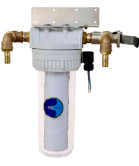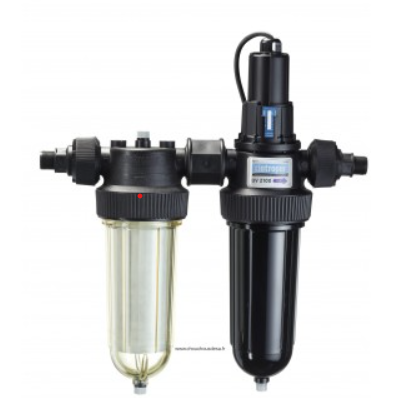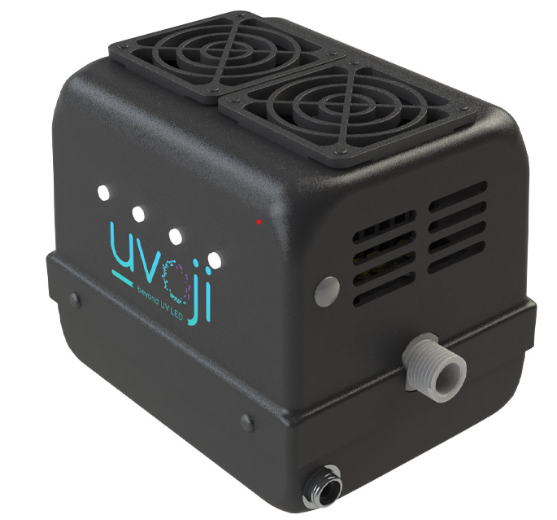WATER ON BOARD #2

TREATMENT / POTABILITY
Having defined the various sources of water available, established your requirements based on the use of the boat, the type of boating you do and the desired level of comfort, there still remains the question of the quality of the water and the means on board for treating it.
Water-related risks
Whatever the means of recovery and/or storage, water on board is often considered unfit for consumption. Known as “raw water”, 68% of our water comes from groundwater and 32% from surface water. And according to the Environmental Protection Society, 90% of this water is contaminated.
Groundwater is naturally loaded with mineral salts, but its chemical composition can vary depending on the geological nature of the ground it’s in. A sandy soil will give a weakly mineralized water, more commonly called soft water. On the other hand, a calcareous soil that’s highly mineralized, containing limestone, will yield hard water. Groundwater can also be either more or less sensitive to pollution. Depending on the soil of origin, there may be different pollutants that exceed the permitted standards for drinking water.
Surface water is the term used to describe water from rivers, streams, but also stagnant water, such as lake water, dams, and sea water. It can be fresh, brackish or salt and its chemical composition also depends on the nature of the soil. In addition to these natural composition factors, there is also pollution from human activity: industrial waste, wastewater treatment plant waste and agricultural runoff. Raw water can potentially contain polluting substances such as pesticide residues, iron, fluorine, as well as solvents, heavy metals, hydrocarbons, nitrates, and so on. Ultimately, water in its natural state is not potable.
What is potable water?
The World Health Organization defines potable or drinking water as “water that can be drunk or used for sanitary purposes at a rate of 2 liters per day for a lifetime, without risk to health”. While most countries have strict standards that set limits on chemical composition and regulate quality and infrastructure through regular monitoring, water quality remains inconsistent around the world. Being the main source of proliferation of viruses (such as polio or hepatitis) or bacteria such as cholera or salmonella or amoebas, it is vital that we are informed about the quality/potability of the water available in the regions we sail.
Even though it might seem obvious, it’s important to point out that the process of filtration and purification depends a lot on the source of the water. Water drawn from areas with proper health regulations, will be much more easily made drinkable because it is healthy and of good quality from the outset, than water sourced in third world regions for example. The process will be more complex with highly contaminated water.
Filtration and purification
It is therefore necessary to clean, treat and monitor the water, whatever its source. Let's take a look at filtration and purification systems available for guaranteeing clean and healthy water, in our continuing quest for self-sufficiency. It’s important to differentiate between water filtration and water purification. While purification involves modifying the composition of water to make it clean and drinkable, filtration removes only the largest particles.
- Mechanical filtration:
The filtration process always begins with mechanical filtration. Textile or granulometric filters, generally ranging from 25 to 5 microns and operating like a funnel, are designed to remove the largest particles and micro-organisms from human and animal waste and responsible for the pathogenic contamination mentioned earlier.
Mechanical filtration occurs upstream of the watermaker, just after the seawater recovery pump. For water from the dock or rainwater, a filter can easily be clipped onto the hose before it reaches the tank.
These filters need to be cleaned and changed regularly. The alternative of a sand filter (such as you’d find with a swimming pool) requires more space on board but has the advantage of being more economical and requiring less maintenance.

2. The chemical and/or UV process:
The second stage involves filtering out the finer particles and disinfecting the water. A process of filtration by activated carbon is the most common. This filter is a trap for almost all physical and chemical elements responsible for water pollution. Thanks to the large surface area of its pores and grains, which give it great absorbent qualities, it isolates bad tastes, odors, chlorine and micropollutants, including a large number of pesticides that are undesirable for health.

This filter can be placed at different positions in the circuit. Its location will be defined by the use of the vessel. On a leisure craft with occasional and mostly daytrip style outings, it can be placed after the tanks, immediately before the faucet used for drinking water.
On the other hand, aboard a charter boat that experiences more intensive activity and boats used for commercial purposes, the carbon filter should be sited upstream of the watermaker. It will be added to the series of filters in the filter holder of your hose for water taken from the dock. Installed upstream, these filters help preserve the watermaker’s sensitive membrane and have the advantage of allowing you to store healthy and pure water in the tanks.
Most often seen in the form of cartridges treating a defined number of liters, they will have to be changed more regularly if they are placed upstream of the water distribution pump as they will be treating all the water used on board. The economical alternative to this step is refillable cartridges using carbon bought in a can. This solution is great for blue waters sailors living aboard.
Finally, you can choose to place your activated carbon system after the tanks directly at the beginning of the circuit. It will then be treating the water from the tanks, which can itself become contaminated if it stagnates for too long. This means you’ll be supplying all the boat's water outlets with purified and filtered water. Using this location, it will also ensure the preservation of the entire distribution system.
If you’d rather avoid this chemical process of tank treatment and an excessive consumption of carbon filters, the solution of UV treatment is developing more and more, and seems to be the best alternative for creating potable water on board. The system developed by the company Uvoji offers UV treatment units that are easy to install in your plumbing circuit. The installation of a UV system means that you instantly neutralize the pathogens present in the water by the emission of UV-C. The UV-C photons will break down the DNA of the micro-organisms, thus preventing their reproduction, rendering them harmless. This solution, coupled with the activated carbon principle, is the ideal solution for ensuring the potability of your water, especially given that the effectiveness of carbon is altered by temperature and that the UV process is instantaneous and requires no maintenance.
So, it’s important to highlight the option of combining the processes to treat the water.

Storage
The water stored in the tanks is the third key point of a healthy water on board. If it is not used regularly, daily even, and if the water is left to stagnate for several weeks in the tanks, it will probably become contaminated with bad odors, and algae and bacteria are likely to develop. The water in the tanks should be checked regularly using test strips. Quality and sanitary control is sometimes mandatory in a commercial context and is based on microbiological (absence of parasites and bacteria), physicochemical (temperature and pH), chemical and radiological qualities.
The most common way to treat tank water is to add a powder or tablet purifier to the water when the tank is filled. Such products, like Aqua Clean, Mikropur, or Mikrosept, use silver ions to keep the water in the tanks safe for 6 months.
The manufacturers of these products also offer tank cleaning solutions. Generally, the use of active oxygen gives the best results for cleaning tanks. However, active agents containing silver must be handled with care: the European Food Safety Authority recommends a limit of 0.05 mg of silver per kilogram of food. Water sterilized under these conditions is allowed for your personal use only. This means, officially, you shouldn’t give water from your tanks to a neighbor on the dock.
Also note that if you winterize your boat, care must be taken to drain the water system. A standard compressor will easily do the job, forcing the water out of the system. You can also fill the system with an antifreeze product for the duration of the winterized period.
To sum up, it’s important to understand that self-sufficiency in terms of healthy water on board depends beyond the resources, on a well-thought-out system, regular monitoring and a correctly maintained circuit, and that it all depends on the type of boating that you do.



